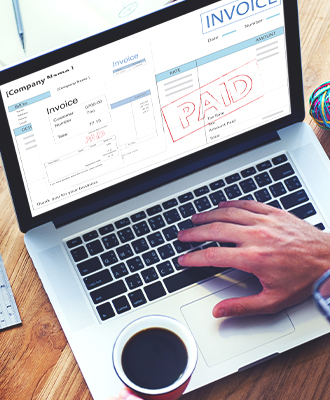Whether you call it the accounts payable turnover ratio, the payable turnover ratio, AP turnover ratio, or creditors’ turnover ratio, the number of times you pay your creditors in a given accounting period (measured in number of days) can have a significant impact on short-term liquidity (i.e., cash flow). But that’s only the beginning; it also directly affects the health of your relationships with suppliers, and your company’s overall ability to compete, grow, and innovate while still paying the bills.
Like its complement, the accounts receivable turnover ratio, the accounts payable turnover ratio is one of the most important financial ratios companies use to evaluate their near- and long-term success in meeting both their obligations and goals. With the right tools and techniques, taking the time to fine-tune this ratio to protect your business operations and relationships is easier than you might think.
Why a Healthy Accounts Payable Turnover Ratio Matters
For businesses big and small, cash flow and vendor relationship management are two business critical concerns. Finding a way to keep sufficient cash on hand to support business goals while building strong supplier relationships requires a strategic approach for maintaining a healthy accounts payable turnover ratio.
In a nutshell, your AP turnover ratio measures short-term liquidity, tied directly to another important metric, days payable outstanding (DPO).
The payable turnover ratio formula is:
Net Credit Purchases ÷ Average Accounts Payable (AAP) = APTR
Note: You might also divide cost of sales or cost of goods sold (COGS) rather than total supplier purchases (Net Credit Purchases) by the average accounts payable value, depending on your company’s bookkeeping methods.
Generally speaking, it’s better to have a high ratio than a low ratio, since that means you’re paying your short-term debts quickly (and in many cases, early), taking advantage of early payment discounts and meeting or exceeding the repayment expectations of vendors and creditors. This means a lower DPO and has a favorable impact on your credit rating, since it demonstrates your ability to return capital quickly and consistently. A high turnover ratio is ideal for companies who want to build or repair their credit quickly.
At the other end of the spectrum, a low accounts payable turnover ratio shows creditors you pay more slowly, leading to a higher DPO. That’s not always a bad thing, however, since companies with a lower accounts payable turnover ratio may simply prefer to pay as close to the due date as possible. In other cases, they may have leveraged supplier relationship management to negotiate very favorable credit terms that allow them to pay less frequently while avoiding both late payments and the usual penalties that come with slower payments.
There’s no single “best” way to approach AP turnover, other than the approach that best fits your company’s goals and balance sheet. Take the time to monitor and analyze your company’s accounts to gain the insights necessary to help you build a dynamic and proactive framework for ensuring payables turnover is providing not just working capital, but strategic value.
“Choosing a centralized, cloud-based solution like PurchaseControl gives you the transparency and control you need to collect, organize, and analyze the data necessary to a strategic, rather than haphazard, approach to managing cash flow, supplier relationship management, and overall business process optimization.”
Optimizing Your Accounts Payable Turnover Ratio
A few simple best practices can help you strike the right balance for your AP turnover ratio.
Make Managing Liquidity Part of Your Business Continuity Planning
Simply doing business in the modern economy means navigating a complex chain of interdependencies that might not be apparent at first blush. For instance, your accounts payable turnover ratio is directly affected by your revenue and the payment terms set by your creditors.
But it’s indirectly vulnerable to disruption by larger economic factors that also affect your business as a whole.
For seasonal businesses, for example, every accounting period is a literal case of feast or famine. Even standard businesses like retailers experience a significant bump to sales over the course of the winter holiday season, but seasonality can make or break businesses that rely on strong performance during a limited time each year.
As a result, it’s important to have clear, complete, and accurate sales and spend data for any given period. This will prove invaluable when:
- Planning total spend.
- Managing inventory turnover.
- Drawing up budgets.
- Making adjustments for both credit sales and credit purchases, both of which can affect cash flow and your ability to pay vendors early or on-time.
Another component of business continuity planning with a direct impact on AP turnover is supply chain resilience and flexibility. If you don’t have the materials, goods, and services you need to do business—or can’t get your goods or services to the consumers who will purchase them—both your cash flow and your ability to pay the bills will suffer.
Today’s world is full of potential disruptors, from pandemics to climate change to devastating international conflicts. Building contingencies into your supply chain and negotiating contextual payment terms with your most important suppliers will help protect your working capital and your supplier relationships in times of crisis.
Be Proactive with Supplier Relationship Management
Just like you, your vendors and creditors have businesses to run. Taking a collaborative, communicative approach generates goodwill and minimizes the risk of misunderstandings that can damage or even end relationships. Pay vendors with their preferred method whenever possible. Communicate openly about potential delays in payment, disruptions to your operations or supply chain, and suggestions or requests you have that will help you free up cash or capture value and savings through incentives.
Consider Outsourcing
Business owners have different needs and priorities. Small businesses, for example, often lack the capital (e.g., a line of credit) and human resources (e.g., a dedicated accounting staff) available to their larger counterparts. As a result, they may find it difficult to devote the time necessary to managing their company’s accounts while simultaneously running the business itself.
For these companies, outsourcing may prove beneficial by taking the “heavy lifting” out of tracking financial activity, paying their bills on time and keeping suppliers and other creditors happy while avoiding penalties, late fees, and the very real (and potentially fatal) risk of being dropped by a business-critical supplier.
Of course, it’s possible to keep things “in house” with the right technology. Another option that may be attractive to small business owners and corporate finance departments alike is investing in automation and artificial intelligence through a comprehensive procurement software package.
Invest in an eProcurement Software Solution
Formalizing and implementing your best practices for managing your payables turnover ratio goes hand in hand with optimizing your entire procure-to-pay (P2P) process. Choosing a centralized, cloud-based solution like PurchaseControl gives you the transparency and control you need to collect, organize, and analyze the data necessary to a strategic, rather than haphazard, approach to managing cash flow, supplier relationship management, and overall business process optimization.
Consider these benefits:
- Full transparency into your company’s spend, allowing you to track payables using a variety of metrics, including:
- Total purchases
- Current or average payable balance
- Spend category
- Specific vendors
- Credit and payment terms.
- Centralized data management and analysis to track liquidity ratios (i.e., both accounts payable turnover ratio and accounts receivable turnover ratio) and important key performance indicators (KPIs) such as percentage of invoices matched (much easier with automatic three-way match), percentage of invoices paid early or on-time, total vendor discounts captured, etc.
- Contract management and supplier relationship management modules to improve negotiation strength and provide insights you can leverage to streamline your supply chain, build contingencies to protect both your bottom line and your ability to pay the bills through business continuity management, and build strong relationships with your most critical suppliers.
- Support for inventory management, including inventory turnover tracking, to ensure you’re not keeping valuable working capital tied up in excess inventory.
- Integration with your existing software environment (including your accounting software, enterprise resource planning (ERP) solution, customer resource management (CRM) system, etc.) to ensure you have complete and accurate data.
- Real-time financial analysis and reporting capabilities for clear, accessible financial statements and more strategic decision-making.
- Support for adjustable automated payments and contingencies to help insulate against factors such as seasonality, supply chain or revenue disruptions, etc.
- Automation tools eliminate human error and increase the accuracy and speed of critical workflows, including invoice processing, to allow your team to:
- Take advantage of early payment discounts, volume rebates, etc.
- Make targeted, on-time payments that preserve relationships and keep cash free as long as possible.
- Waste fewer resources and generate cost savings while freeing staff to perform tasks with greater strategic value.
- Integration with vendor data systems allow for collection and analysis of important supplier data you can use to negotiate better payment terms and/or credit terms, as well as support for electronic invoicing.
You can also review vendor compliance and performance data against vendor management KPIs to identify those suppliers with optimal value as potential partners who will make mutually beneficial agreements that best fit your targets for AP turnover and DPO.
It’s Time to Optimize Your AP Turnover Ratio
Protecting your working capital while staying on good terms with your creditors doesn’t have to be a struggle. Invest in the right tools, following a few best practices, and make sure you have a clear and consistent understanding of your company’s financial condition and short- and long-term liquidity needs. By doing so, you’ll be able to fine-tune your AP turnover ratio and ensure your business has the resources it needs to compete and innovate effectively, meet its obligations, and develop valuable, strategic supplier relationships.
Automate and Optimize with PurchaseControl to Get More Value and Savings from Procurement and AP
Find Out How








